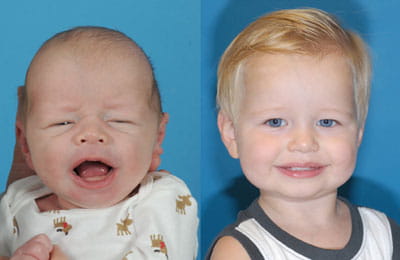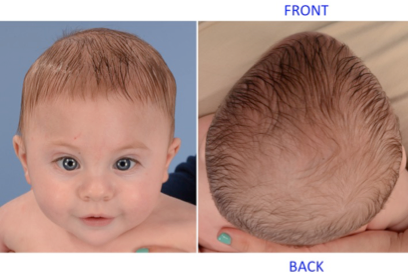Full or bulging fontanelle soft spot located on the top of the head sleepiness or less alert than usual scalp veins may be very noticeable increased irritability high pitched cry poor feeding projectile vomiting increasing head circumference.
Craniosynostosis symptoms in babies.
Less common is a restriction of head growth with the measurements falling off the pediatrician s growth curves.
Craniosynostosis is a condition in which parts of a baby s skull fuse together too soon and cause the head to become atypically shaped.
Other symptoms in newborns infants and young children happen because of increased pressure inside the skull including.
Other much less common signs may include.
One side of your child s face may look markedly different from the other side.
A pediatrician will check an infant s head regularly in case craniosynostosis is present.
Other signs may include.
This can lead to build up of pressure inside the skull.
The first sign of craniosynostosis is an unusual head shape.
Symptoms of too much pressure in the skull include.
Craniosynostosis symptoms in infants with this condition the most common signs are changes in the shape of the head and face.
An abnormal feeling or disappearing fontanel on your baby s skull.
A distorted skull shape an unusual feel to the fontanel or.
A misshapen skull with the shape depending on which of the sutures are affected.
Headaches wide or narrow eye sockets learning disabilities vision loss.
The most apparent sign of craniosynostosis is typically an abnormally shaped head.
Depending on the type of craniosynostosis your baby has other symptoms can include.
Symptoms of craniosynostosis craniosynostosis usually is present when your baby is born congenital.
Missing full or bulging soft spot fontanel on the newborn s skull bony ridges along the affected sutures.
A newborn s skull is made up of seven major plates of bone separated by sutures the narrow spaces between the plates.
The general signs of craniosynostosis are.
The soft spot may be open or closed.
Development of a raised hard ridge along affected sutures.
The most noticeable symptom your baby may have is an abnormally shaped head or face.
Sutures are where much of the growth of the skull occurs during infancy.





























